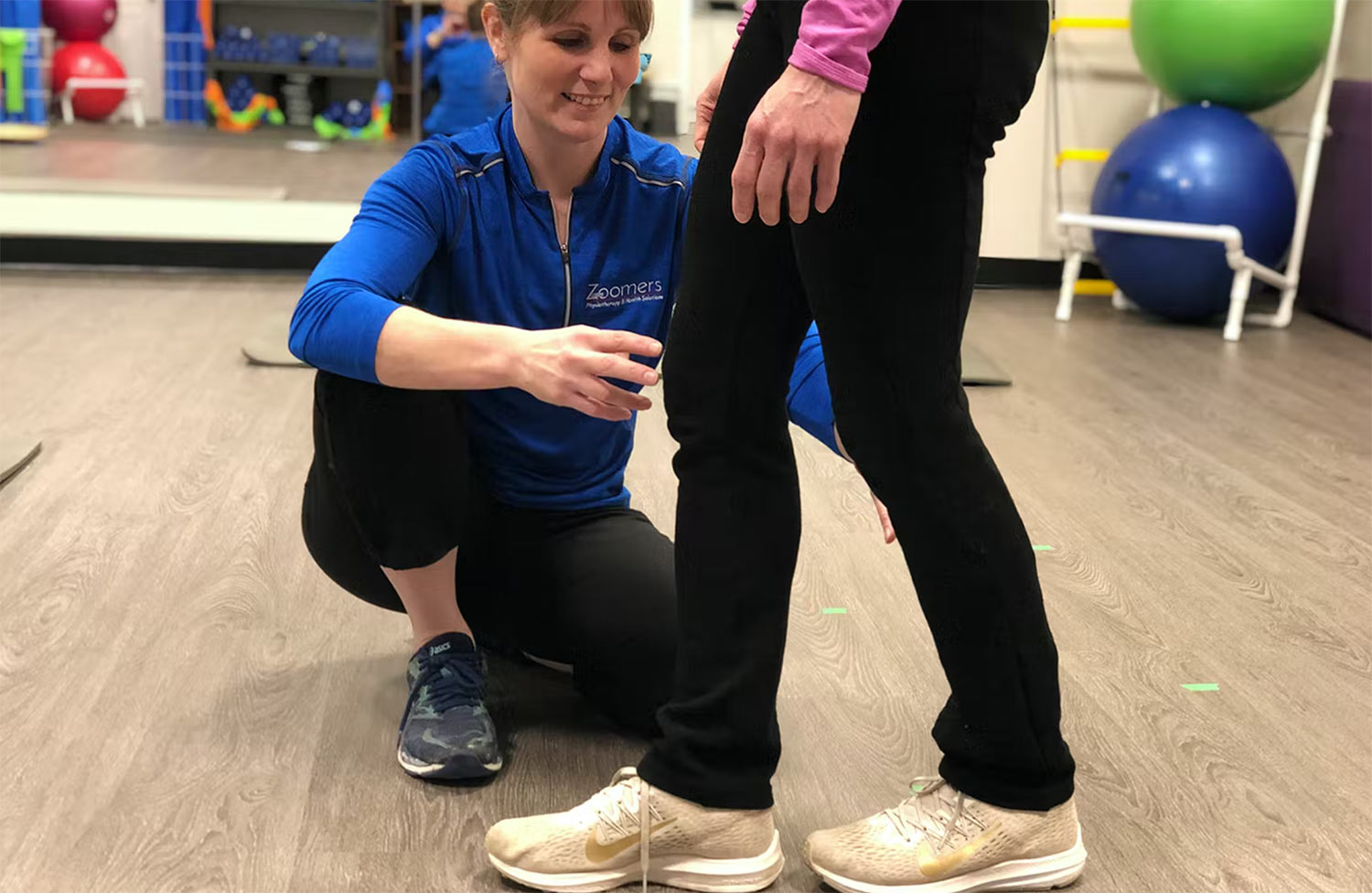Book an assessment with Zoomers now!
Use our online booking tool to find a time that works for you!
As the weather warms up, many of us will be looking forward to getting more fresh air and physical activity by walking more often. In physiotherapy, we like to educate our clients on walking programs because they are a fantastic way to keep moving and increase your overall well-being by giving a boost to your physical and mental health.
Whether a regular walking program is completely new to you or you are simply getting back to it after the winter “break”, making a plan is important. Here are the five areas we consider at Zoomers Physiotherapy when working with our clients to help them get started off on the “right foot” with their walking programs and help them keep moving!
Get Medical Clearance
Walking is generally a safe form of exercise. However, if you are new to exercise and/or have a new health diagnosis, it is best to check with physiotherapy or your family doctor before getting started.
Make a Plan
When starting a walking program, it is a good idea to space your walks out with at least one day “off” between them. This means you should initially plan to walk no more than 3-4 times per week.
It can be helpful to start each walk at a slightly slower pace for 5 minutes to allow your body to warm up. It is also important to keep moving for 5 minutes at the end of your walk at a slower pace to allow your body to cool down. The additional time that you spend walking will depend on your initial fitness. Physiotherapy can help you determine how long you should warm up and cool down based on your fitness level. Walking 3 times per week for approximately 20 minutes each time (including warm-up/cool-down) is a good guideline so that you can keep moving without overdoing it.
Determining how difficult your walk should feel (the intensity) can be challenging. In physiotherapy, we often use the “talk test” to find the right intensity for you as you keep moving. If you can sing while walking, you might not be working hard enough; if you can’t talk without being short of breath, you are likely working too hard. If you’re unsure about the intensity that is safe for you or how to adjust it, this is a good question to ask during a physiotherapy visit.
Choose Your Route
Routes that are relatively flat and have predictable terrain are the best option when you’re starting a walking program. Avoid ungroomed paths and the shoulder of the road where the footing can be uneven; this creates abnormal stress on your feet, knees, hips and back, making it harder to keep moving comfortably. You might save yourself a visit to physiotherapy with this tip!
Choose Your Equipment
Whether it is the shoe salesperson or your physiotherapist, someone should watch you walk in and out of your shoes to determine which shoes are best for you; it matters. Other items like orthotics, braces and walking poles can sometimes make walking more comfortable and are great options to include if they are helpful for you and they can help you keep moving.
Stretch
It can be helpful to stretch your lower body muscles (buttocks, thighs, calves) after each walk to reduce muscle stiffness. Physiotherapy can teach you stretches that are specific to your goals.
The right combination of these strategies is a little different for each of us, but hopefully it gives you enough guidance so that you can get or keep moving! You can also get help through a physiotherapy assessement to set up a program that is specific to your starting point and goals.
Good luck getting started! No matter where you’re starting, the goal is to keep moving and stay safe. If you have questions about your walking program or how to manage a new ache or pain. Book with a member of the Zoomers Physiotherapy Team to get the help you need to help you stay on track!
Book an assessment with Zoomers
Use our online booking tool to find a time that works for you!


